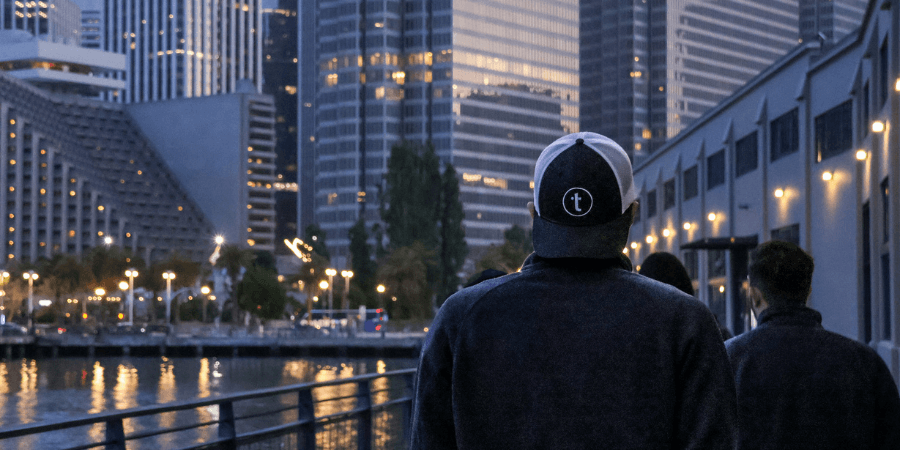
When we look at both everyday life, as well as the way all of us conduct business, a lot has changed in the past few years. Just three years ago, the idea of being a “remote-first” company was foreign to most. Sure, plenty of companies have had remote employees for decades now, but roughly 75% of workers in the United States regularly commute to and from an office building to put in their eight hours. While we ultimately have railroad workers to thank for standardizing the eight hour work day, advancements in technology have made the transition to remote work easier than ever. Telegraph prides itself on forming a passionate team of builders regardless of their physical location. By indexing on capability and passion instead of proximity, we have been able to hire experts who propel us forward as an organization, and also leverage those same strategies for dynamic customer success.
Acknowledging the Importance of Balance
We have a simple mission – to provide an invigorating working environment where our employees are empowered to produce the best work of their careers, while simultaneously maximizing their work/life balance. We hear that phrase a lot these days – work/life balance. So what does it actually mean? For Telegraph, it means that someone does not have to choose between a job that they are really excited about and uprooting their lives to move to a new location. It means that a parent has the flexibility to pick their kid up after school and take them to soccer practice, while still taking the lead on a new product launch, or a research session with operators at a shortline switching facility. It means that we recognize that work is one part of life, and that employees are better able to prioritize their work when a flexible and supportive environment is the centerpiece.
Opportunities for Engagement
We fully recognize that location-centric companies will never fully go away. For all the chatter about how people get more done at home, away from the general day-to-day distractions of an office space, there is a lot of inherent benefit when people are readily able to come together, collaborate, and learn from one another. With this in mind, we have made two key things a priority: regular, weekly office days at our Chicago office, and semi-annual company-wide offsites. While our employees are spread far and wide across the United States, the highest concentration of employees in one location is in Chicago. Office days are not mandatory, but they give us the chance to regularly come together and create magic. Truly, when you get your best people in a room together, magic happens. This might be in the form of completely new product features, or through fresh perspectives identifying a problem, ultimately leading to innovative solutions.
If you follow us on LinkedIn, you probably saw some of our posts from San Francisco the week before last. This was such a fun, energizing experience for the whole company. Having this time to dedicate to intentional hands-on learning and design thinking allows us to go back to our respective work locations better equipped to execute. Our Chief Growth Officer, Shachar Astor, noted that, “Getting us all together in person strengthens bonds across our various teams, and creates a sense of empowerment and ownership. This allows us to better serve our customers, ideate new products, and further our mission of creating a magical user experience.”

Cultivating Partnerships by Showing Up
A similar shaping of culture is at work when we think about how we manage our customer engagement experience. While our employees are always remotely available for training, questions, or strategizing, we find that in-person meetings and time with our customers create dynamic value in the overall customer service experience. By spending the time cultivating our relationships with our customers, we are better able to understand and anticipate their needs, and implement long-term solutions for them as users of our platform. Whether that is in the yard to better understand the complexities of physical operations for rail operators, touring shipper facilities to see how raw materials are handled, or meeting with logistics partners in the office to launch new products and train users face-to-face, we feel it is important to meet our customers wherever they are.
Being a remote-first company does not mean that our customers should expect a remote customer service experience. In reality, our team lives and breathes customer success. We visit customers regularly, with hands-on engagement being the standard. Because of this, our customers know that they should expect a responsive, solutions-oriented experience with Telegraph, and a team that takes user feedback to constantly launch new products.
Creating a Reciprocal Relationship
It is a really straightforward formula – we show up for our employees so that our employees can show up for our customers. Our CEO, Harris Ligon regularly notes that he sees his role being, “To serve you [our employees], our customers, and our shareholders, in that order”. We strive to be a company that practices what we preach, which is why in addition to standard benefits, we also thought about how things like 12 weeks of parental leave, a co-working stipend, and a paid sabbatical could really serve the lives of our employees, and made those things a part of our culture.
By creating an environment where our people are able to produce their best work in a way that best suits their life, we are, in turn, able to build software that modernizes the operator experience for the most critical component of the supply chain, and generate the very best results for our customers.
